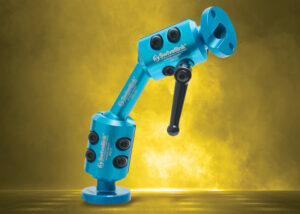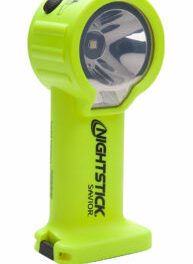By: Mark Stromme, Contributor
A regular inspection program will make sure that the drop security tools getting employed is in superior doing the job buy. © Hor – inventory.adobe.com
Myths exist in many cultures and that rings legitimate for the environment of place of work security. Workers and supervisors can have a broad selection of expertise concentrations, but myths can be a problem even for professionals with many years of encounter. A person place in distinct that results in confusion revolves all-around the fall security matter.
Why ought to we treatment about these myths because they really don’t genuinely harm anybody? Which is not true and not disputing these myths can trigger injuries and worse. So, we’ll explore and dispel five frequent tumble protection myths.
Fastened ladder self-closing gates
Fantasy: A self-closing gate is demanded only on set ladders above 24 feet substantial.
That is not accurate, as a self-closing gate (or offset) is expected on any set ladder obtain point much more than 4 toes large.
This relates to OSHA’s prerequisite to secure each individual worker from falling into a ladderway floor hole … besides at the entrance to the gap, the place a self-closing gate or an offset must be utilised.
As with all OSHA doing the job walking area specifications, tumble protection is necessary at the 4-foot threshold. So, make confident that if your fastened ladder does not have a self-closing gate you get it retrofitted.
Dock doorway fall protection
Fantasy: Loading dock doors open for ventilation really do not will need fall safety, or possibly just a chain will suffice.
OSHA requires slide defense at a peak of 4 toes or more and most loading docks are at the very least 4 feet significant. Concerning chain use, one chain is not sufficient, but two could perform offered they meet the prerequisites for the leading and midrails.
Guardrails demand a best rail and a midrail and if you’re making use of manila or artificial rope for the best or midrails make guaranteed you inspect it. It have to keep the power specifications of 200 and 150 kilos, respectively.
Stair rails and handrails
Myth: Stairs could have a one rail as a handrail and stair rail.
Partially legitimate, but only for grandfathered stairs in spot as of January 2017 and if the railing is at minimum 36 inches, but no additional than 38 inches substantial. Employers will have to verify more mature stairs meet up with the criteria.
New stairs have to have both a:
- Handrail no additional than 36 inches significant
- Stair rail no a lot less than 42 inches high
A handrail is a rail utilized to provide personnel with a handhold for support. A stair rail or stair rail procedure means a barrier is erected together the uncovered or open up facet of stairways to reduce workers from falling to a lower stage.
The rationale for the big difference in heights is that for most individuals a handrail that’s 42 inches in top is much too superior for them to use as a handrail. Which is why OSHA calls for the 36 inches peak.
Tumble defense distance from an edge
Myth: If employees really do not go inside of 6 ft (or 10 feet) of an edge, they really don’t need to have slide security.
If employees really don’t go in 6 feet of an unprotected edge, then they do not require tumble security. A variation is, “How close can a employee get to an edge in advance of slide security is needed?”
Very well, there is no “safe” distance from an edge. We know that the regulation talks about employees who are “exposed to falls” but in accordance to OSHA, just indicating that you will not go inside of 6 toes or 10 ft of the edge is not more than enough. It’s however a fall hazard.
Together the same strains, there is no “safe” quantity of time an individual can do the job in an elevated spot with out tumble protection. Some personnel may say they’ll only be in an place “for just a handful of minutes” but if there’s a slide hazard, they will need to use drop defense.
In most scenarios the place a employee would be exposed to a tumble of 4 feet or far more, you almost certainly have guardrails. But often workers need to have to do the job on leading of devices or other destinations where by individuals don’t usually go. It doesn’t matter if they remain a small time or keep away from the edge, OSHA however demands fall defense.
Ladders, scissor lifts and aerial lifts
Myth: You have to have to tie off on a moveable ladder … This is not a Federal OSHA necessity and not identified in the rules. If your personnel did tie off to a moveable ladder and then did fall, what would happen? The worker would continue to make contact with the ground and also pull the ladder down on top of them.
Myth: You don’t want to tie off in an aerial raise … OSHA claims a private drop arrest or travel restraint program that fulfills the necessities in 1910 Subpart I have to be worn and connected to the increase or basket when performing from an aerial carry. Ordinarily, the employee would be equipped with a harness and tied off to the basket. Bear in mind, the use of a body belt in a tethering program or in a restraint method is acceptable.
Myth: You need to have to tie off when in a scissor elevate … OSHA considers scissor lifts to be cell scaffolds and regulates them at 1926.453(w). Scissor lifts have common guardrails that come from the manufacturer. If all the guardrails are in position there isn’t a need for the user to tie off like there is when making use of the aerial lift. On the other hand, if just one or more of the guardrails is removed, then employees in the carry have to have to be tied off.
Options to dispelling myths
There is seriously no unique secret for dispelling myths. But if people today are following a fantasy (and they don’t know it is a fantasy) you should get the accurate info out there.
Instruction is 1 response, and not just on OSHA-essential subjects. You are going to likely want to go previously mentioned and outside of. And retain in mind that if you come across a myth, it is probably unfold out to other individuals, so you are going to want to attain out to anyone who could be misinformed.
Wander-throughs and self-audits can assistance you detect myths, then start off using motion to appropriate them.
In addition, 3rd-social gathering audits can help. In some cases you are going to get additional help for overcoming objections if a specialist backs up your arguments.
Wrapping it up
Staff members and supervisors can have a broad array of expertise stages, but myths can be a problem even for experts with many years of expertise. If your firm has a workforce of safety men and women, make guaranteed none of them are mistakenly spreading incorrect info. WMHS
Mark Stromme is the Sr. EHS Editor, J. J. Keller, a reliable source for DOT / Transportation, OSHA / Place of work Safety, Human Sources, Design Safety and Hazmat / Harmful Components regulation compliance goods and products and services. J. J. Keller assists you improve security consciousness, decrease danger, observe greatest practices, make improvements to security training and remain recent with changing regulations (www.jjkeller.com).
The post That’s Not Genuine — Dispelling Common Drop Protection Myths appeared initial on Workplace Content Dealing with & Protection.




